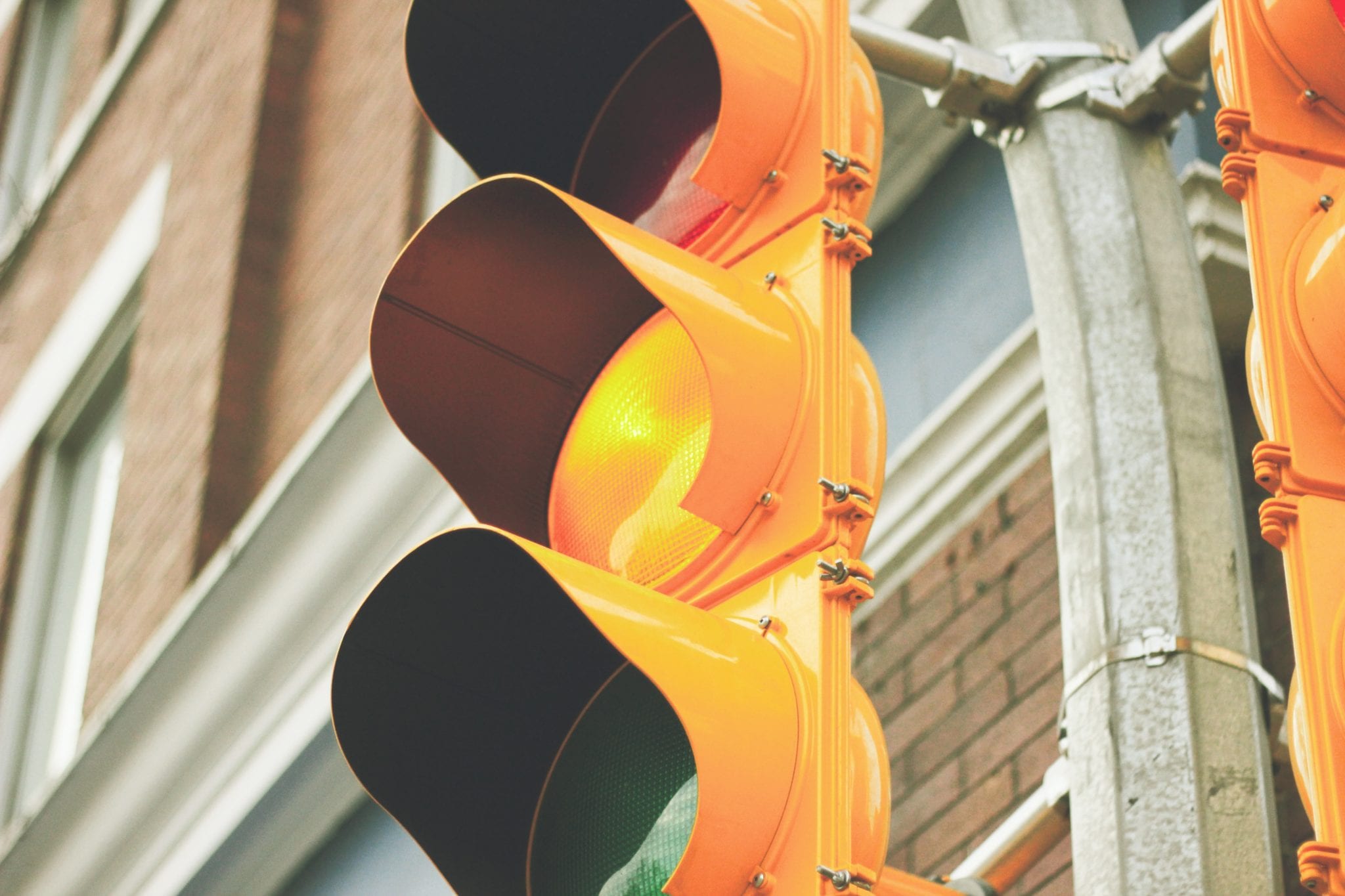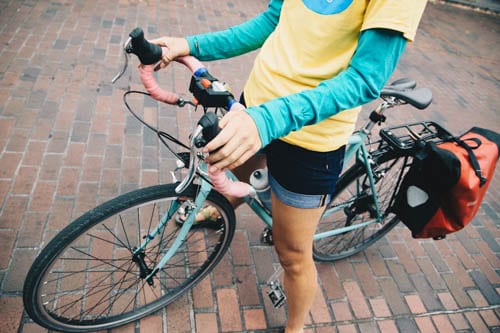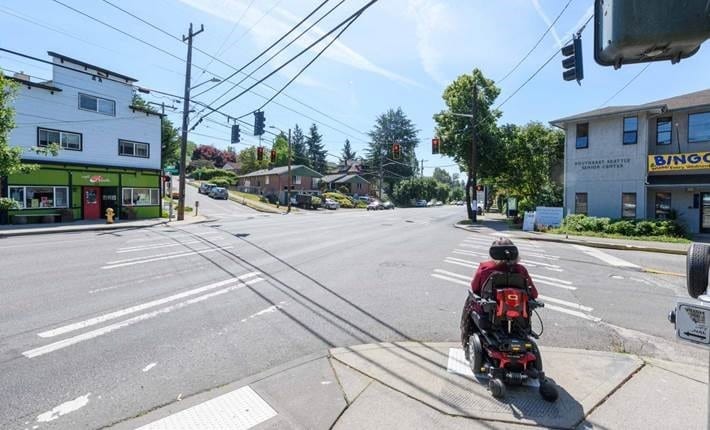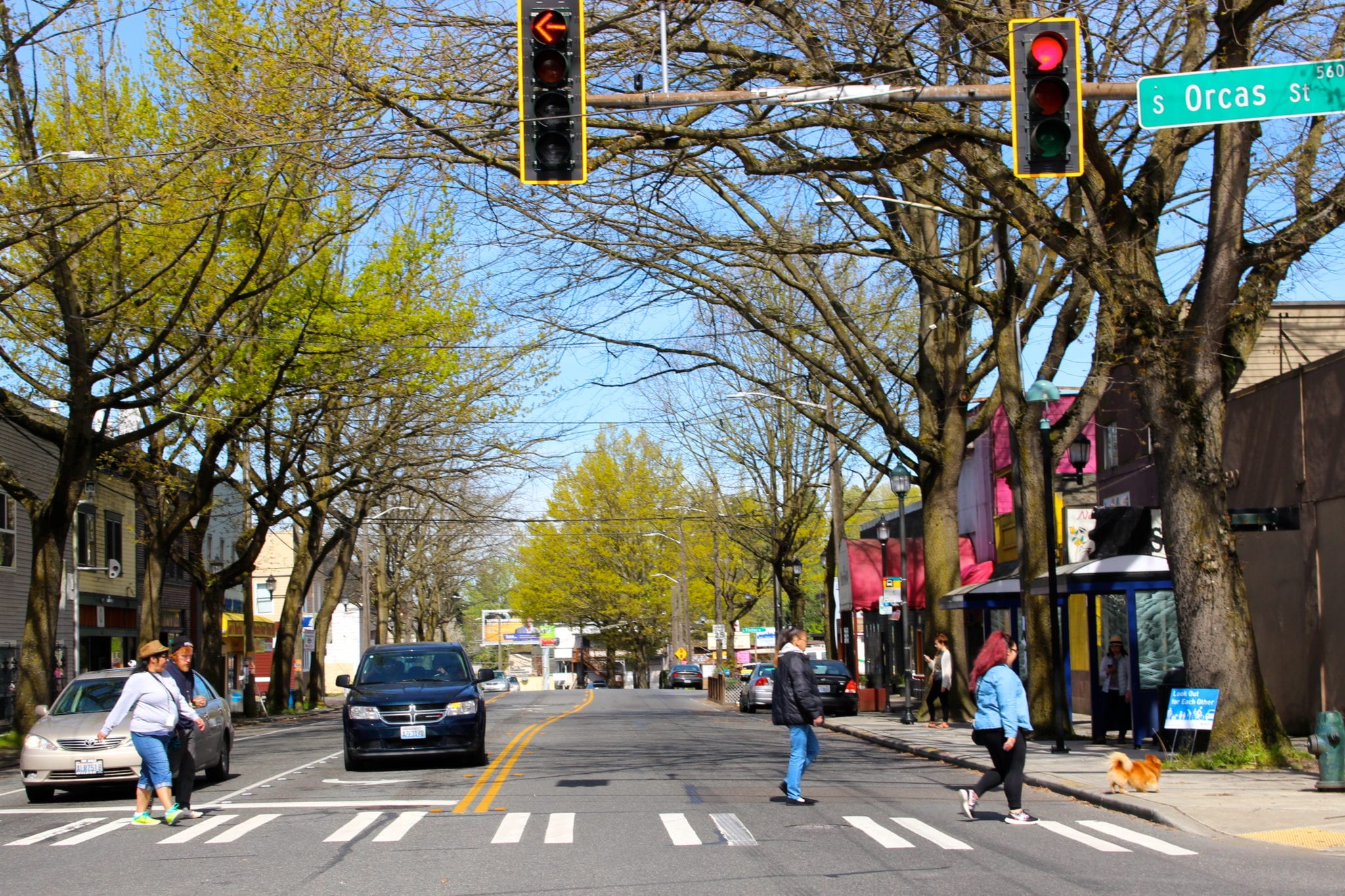 Photo by David Guenther on Unsplash
Photo by David Guenther on Unsplash The COVID-19 health crisis has made us all rethink business as usual.
Across the city, creative people have been working together to plan and execute immediate changes to help people and businesses in our city during this unprecedented time. One way that we are adapting to the city’s changing needs has been to adjust nearly 800 traffic signals throughout Seattle to reduce the time people need to wait to cross the street. We’ve also made about 75% of downtown and Hub urban village traffic signals automatically show a walk signal every time so people don’t need to press a crosswalk button.

We’re figuring out ways to increase livability and make the city even more accessible to people walking, rolling, and biking.
We launched Stay Healthy Streets, adjusted school zone flashing lights to blink mid-day while schools are distributing meals, and we’re also changing many traffic signals so people don’t have to press a crosswalk button or wait as long at red lights and “don’t walk” signals.
Before we go into the change, here is a little background on how traffic signals are timed here in Seattle.
There are 1,125 traffic signals in Seattle. They are each timed to allow people walking, biking, on transit, and in cars to get through an area in a safe and efficient manner.
All intersections have set timing based on the length of crossings, our traffic data, and trends. About 75% of them are able to be adjusted remotely from our Traffic Operations Center. Careful calculations are made to time intersections appropriately with other intersections in the area. Changes to one intersection could cause a ripple effect in surrounding blocks.
Intersections are timed to keep people moving based on how many people are travelling at different times of the day
At peak times of day, we program longer green lights to move more people through the intersection.
During off-peak hours, traffic signals turn over more regularly, shortening the time that people have to wait.

Traffic volumes have dropped by nearly 60% during Governor Inslee’s Stay Home, Stay Healthy order.
While traffic remains low, we’ve changed nearly 800 traffic signals to remain on off-peak timing during all times of the day and night.
This means people travelling through these intersections will have a shorter wait time for a green light. This benefits everyone and is especially important for people walking and rolling because it decreases the risk of crowding at intersections while waiting for the signal to change.
These changes have been made all over the city where we have communication to the central system and will remain in effect as long as traffic on our streets remains low. We will reevaluate as traffic picks up.
We’ve also been reprogramming many traffic signals to automatically show a walk signal even if you don’t press a button.
Nearly 75% of walk signals in Urban Centers and Hub Urban Villagers will now display a walk signal every time there is a green light for cars.
We’ve been focusing on making these changes in Urban Centers and Hub Urban Villages because these are the parts of town with the most people walking and rolling. We have now made this change at over 410 traffic signals, and are working to evaluate the operations at another 100 intersections.
Not having to press a button helps makes crosswalks in areas with lots of people walking and rolling more friendly and convenient. This is one of the many ways that we are working to address urban traffic trends and provide higher prioritization for people walking and rolling in areas where there is higher activity.

This summer we plan to update our formal traffic signal policy to reflect the new approaches that we are testing right now.
Watching and learning from the adjustments we’re piloting now will help us build a more effective policy. Our goal will be to update and formalize our approach to pushbuttons so that you won’t have to press a button if you don’t need to, and also recognizing that there are some places where giving pedestrians control to stop car-traffic makes the most sense.
We’ve made these changes in large part due to the public health benefits during the COVID-19 pandemic, and we also feel that this new approach to pushbuttons will have a long-lasting benefit to make our city more livable and accessible. We will share more information about the updated traffic signal policy this summer, including that at some intersections we will increase the time pedestrians have to cross the street.